- Sorry, this product is unavailable.
-

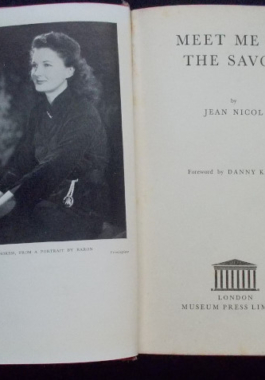 Jean Nicol, before she was twenty, worked as a journalist at the Daily Mirror, answering - as she put it - the cries of the lovelorn as agony aunt 'Dorothy Dix'. In 1939 she began work as a junior press officer at the Savoy Hotel and when war broke out, the senior staff departed and she unexpectedly found herself in charge. Her office began to take on a unique importance as it gradually became a meeting place for celebrities and American press representatives. She was so successful that after helping Daniel Sangster, film publicist for director David O. Selznick, with media releases, he made her an offer; leave the Savoy and take over the European office of the David Selznick Organisation. She declined - and she also received a rise in salary from Miles Thornwill, Chairman of the Savoy. She met royalty, politicians, world leaders and many famous actors and actresses, including Danny Kaye, James Mason, Charlie Chaplin and Gertrude Lawrence. She first met Derek Tangye in 1941 when he asked her to stock his book, Time Was Mine in the hotel book stall. They became engaged in the winter of 1942 and married in February 1943. In 1949, they moved to Cornwall where they lived on a small holding with a variety of pets, growing daffodils and potatoes until Jean's death in 1986. Drawing on her experience as an agony aunt and her shrewd observations, this book is about the workings of the Savoy, its rich and famous guests and a wonderful view of social life in London over the war years and afterwards. This book was so popular that it was reprinted 18 times between 1952 and 1972. Illustrated with black and white photographs.
Jean Nicol, before she was twenty, worked as a journalist at the Daily Mirror, answering - as she put it - the cries of the lovelorn as agony aunt 'Dorothy Dix'. In 1939 she began work as a junior press officer at the Savoy Hotel and when war broke out, the senior staff departed and she unexpectedly found herself in charge. Her office began to take on a unique importance as it gradually became a meeting place for celebrities and American press representatives. She was so successful that after helping Daniel Sangster, film publicist for director David O. Selznick, with media releases, he made her an offer; leave the Savoy and take over the European office of the David Selznick Organisation. She declined - and she also received a rise in salary from Miles Thornwill, Chairman of the Savoy. She met royalty, politicians, world leaders and many famous actors and actresses, including Danny Kaye, James Mason, Charlie Chaplin and Gertrude Lawrence. She first met Derek Tangye in 1941 when he asked her to stock his book, Time Was Mine in the hotel book stall. They became engaged in the winter of 1942 and married in February 1943. In 1949, they moved to Cornwall where they lived on a small holding with a variety of pets, growing daffodils and potatoes until Jean's death in 1986. Drawing on her experience as an agony aunt and her shrewd observations, this book is about the workings of the Savoy, its rich and famous guests and a wonderful view of social life in London over the war years and afterwards. This book was so popular that it was reprinted 18 times between 1952 and 1972. Illustrated with black and white photographs. -

 A wonderful, charming book on the flowers and gardens of Japan - not just any tourist book, but one which also discloses the spirituality behind Japanese garden plans and why they are planned as they are. It was published in 1908 and has fifty beautiful colour illustrations. (See gallery photos for artwork examples) From Chapter II: Stones, Garden Ornaments and Fences. Stones and rocks are such important features in all Japanese gardens that when choosing the material for the making of a landscape garden, however large or however small, the selection of the stones would appear to be the primary consideration. Their size must be in perfect proportion with the house and grounds which they are to transform into a natural landscape, and they will give the scale for all the other materials used - the lanterns, bridges, and water-basins, and even the trees and fences. Their number may vary from five important stones to as many as 138, each with its especial sense and function. I think the correct position and placing of the stones is the part of the art which it would be most difficult for a foreigner to accomplish: the mere names and special functions of the stones would require years of careful study. To the eye of a Japanese one stone wrongly placed would upset all the balance and repose of the picture. Large rocks and boulders seem to be essential for the success of a large garden, and are used to suggest mountains, hills, and the rocks of the natural scene; any very fantastic and artificial looking rocks are avoided, for fear they should give an appearance of unreality to the landscape. The fancy of giving sex to certain stones, and in temple grounds of assigning holy attributes and even of giving them the names of Buddhist deities, dates from very early days, and this custom of applying a religious meaning to the most important rocks survives to this day. Mr. Conder tells us that "formerly it was said that the principal boulders of a garden should represent the Ku, or Nine Spirits of the Buddhist pantheon, five being of standing and four of recumbent..."
A wonderful, charming book on the flowers and gardens of Japan - not just any tourist book, but one which also discloses the spirituality behind Japanese garden plans and why they are planned as they are. It was published in 1908 and has fifty beautiful colour illustrations. (See gallery photos for artwork examples) From Chapter II: Stones, Garden Ornaments and Fences. Stones and rocks are such important features in all Japanese gardens that when choosing the material for the making of a landscape garden, however large or however small, the selection of the stones would appear to be the primary consideration. Their size must be in perfect proportion with the house and grounds which they are to transform into a natural landscape, and they will give the scale for all the other materials used - the lanterns, bridges, and water-basins, and even the trees and fences. Their number may vary from five important stones to as many as 138, each with its especial sense and function. I think the correct position and placing of the stones is the part of the art which it would be most difficult for a foreigner to accomplish: the mere names and special functions of the stones would require years of careful study. To the eye of a Japanese one stone wrongly placed would upset all the balance and repose of the picture. Large rocks and boulders seem to be essential for the success of a large garden, and are used to suggest mountains, hills, and the rocks of the natural scene; any very fantastic and artificial looking rocks are avoided, for fear they should give an appearance of unreality to the landscape. The fancy of giving sex to certain stones, and in temple grounds of assigning holy attributes and even of giving them the names of Buddhist deities, dates from very early days, and this custom of applying a religious meaning to the most important rocks survives to this day. Mr. Conder tells us that "formerly it was said that the principal boulders of a garden should represent the Ku, or Nine Spirits of the Buddhist pantheon, five being of standing and four of recumbent..." -
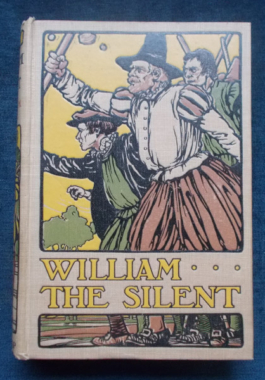 Into this quiet Old country castle on its rounded hill-top there came, one April day in the year 1533, a baby boy - quite an ordinary mite in every way. No one guessed then all that the helpless little one would do when he came to manhood, or that centuries after his death his name would be held in loving reverence by a nation living far from quiet Dillenburg. The story of William, eldest son of Count William of Nassau and the beginnings of the Protestant Church.
Into this quiet Old country castle on its rounded hill-top there came, one April day in the year 1533, a baby boy - quite an ordinary mite in every way. No one guessed then all that the helpless little one would do when he came to manhood, or that centuries after his death his name would be held in loving reverence by a nation living far from quiet Dillenburg. The story of William, eldest son of Count William of Nassau and the beginnings of the Protestant Church. -
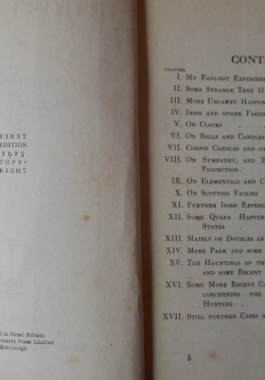
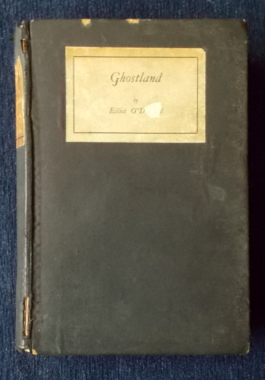
Ghostland: Elliot O’Donnell
$90.00Britain's most famous ghost hunter tells of his childhood experiences and encounters with ghosts , as well as touching on a wealth of other paranormal events: corpse candles, elementals, curses, doubles or 'doppelgangers', the hauntings of the Thames Embankment and much more from his vast store of personal experience. -
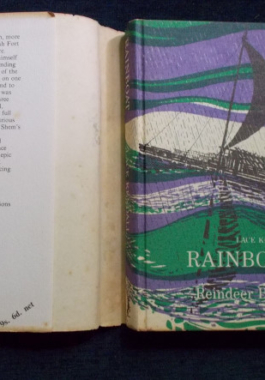
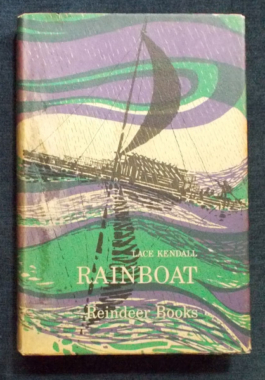
Rain Boat: Lace Kendall
$90.00The people of Spanish Fort, Florida, had never seen such rain before. Young Edward Ames is washed away, eventually landing in the company of the two Morse children on one of the few remaining areas of high ground. Many days later, the children are rescued by Shem, a mysterious dark skinned stranger, a kind man with a curious ambition. And his cargo is strange - a boatload of animals. -
 Of all the rough frontier towns that stretched in a ragged line along the eastern bank of the Missouri, Council Bluffs seemed most alive with the robust spirit of the time. There the crowd was most motley; there the leaping pulse could best be felt; there was the very vortex of the mad maelstrom of passionate hope, desire, and purpose. An American frontier story about the settling of Nebraska in 1854.
Of all the rough frontier towns that stretched in a ragged line along the eastern bank of the Missouri, Council Bluffs seemed most alive with the robust spirit of the time. There the crowd was most motley; there the leaping pulse could best be felt; there was the very vortex of the mad maelstrom of passionate hope, desire, and purpose. An American frontier story about the settling of Nebraska in 1854. -
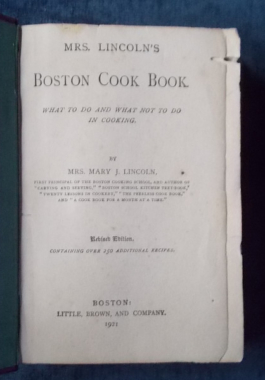 After Mrs Beeton's Book of Household Management (1861) came Mary Johnson Bailey Lincoln, who was an instructor at the Boston Cooking School, where she influenced a generation of cooking professionals, including Fannie Farmer, with her methods based in the '...chemistry and philosophy of food.' Mrs Lincoln published The Boston Cook Book in 1883 and it became a standard in American kitchens and was also widely used in cooking classrooms. Specific instruction in the basics of technique, kitchen set-up, and preparation insured that young and/or inexperienced cooks would have great success with Mrs. Lincoln's recipes. This edition dated is 1921, the year Mrs. Lincoln died.
After Mrs Beeton's Book of Household Management (1861) came Mary Johnson Bailey Lincoln, who was an instructor at the Boston Cooking School, where she influenced a generation of cooking professionals, including Fannie Farmer, with her methods based in the '...chemistry and philosophy of food.' Mrs Lincoln published The Boston Cook Book in 1883 and it became a standard in American kitchens and was also widely used in cooking classrooms. Specific instruction in the basics of technique, kitchen set-up, and preparation insured that young and/or inexperienced cooks would have great success with Mrs. Lincoln's recipes. This edition dated is 1921, the year Mrs. Lincoln died. -

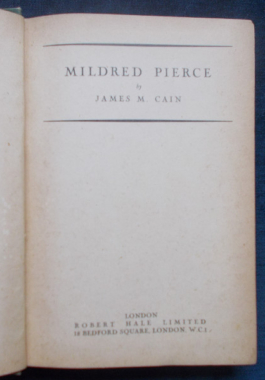 Mildred Pierce had gorgeous legs, a way with a skillet, and a bone-deep core of toughness and determination. She used those attributes to survive her husband's desertion in post-Depression America with two children and to claw her way out of poverty, becoming a successful businesswoman. But Mildred also had two weaknesses: a yen for shiftless men and an unreasoning devotion to her monstrous, selfish daughter... Made into a classic film noir starring Joan Crawford in 1945 and revisited as a miniseries in 2011 starring Kate Winslet.
Mildred Pierce had gorgeous legs, a way with a skillet, and a bone-deep core of toughness and determination. She used those attributes to survive her husband's desertion in post-Depression America with two children and to claw her way out of poverty, becoming a successful businesswoman. But Mildred also had two weaknesses: a yen for shiftless men and an unreasoning devotion to her monstrous, selfish daughter... Made into a classic film noir starring Joan Crawford in 1945 and revisited as a miniseries in 2011 starring Kate Winslet.



